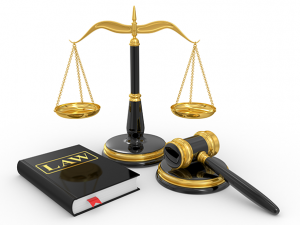Intervening Causes
basic issue:is it fair to hold a neg’t actor liable when the conduct of others is also involved in bringing about he accident?
3 catagories of intervening acts:
1. naturally occuring/nonculpable – do not break chain of causation
2. neg;t intervening acts- will break chain of causation
3. illegal/ deliberately wrongful intervening acts- will break chain of casuation unless original tortfeasor had a specific duty to prevent the act
“within the scope of risk” test: were damages caused by the act within the scope of risk created by original tortgfeasor? OR was the intervening act within he scope of risk? (ist is more consistent with principles of recovery in tort)
General Rule for Novus Actus Interveniens: the person guilty of the original neg’ce will still be the effective cause if he ought reasonably to have anticipated such interventions (canphoto Ltd.et al v Aetna Roofing )
Bradford v Kanellos (1973 SCC)- there was a grease fire in a restaurant, and upon hearing the fire extinguisher a customer shouted “gas is escaping” casuign a stampede that injured the P. held restraunts neg’ce in allowing grease to buid up on the stove was not the proximate casue of the injuries – the hysterical patron was a novus actus interveniens. “was that consequence fairly w/n the risk created by the respondents neg’ce in permitting an undue quantity of grease to accumulate on the grill?”
Rule: it is reasonably forseeable that that a neg’t diagnosis by a first doctor will be relied upon by subsequent treating doctors
Price v Milawski (1977 Ont CA)- P broke his ankle , but emerg. physician ordered foot Xrays not ankle so extent of injury wasn;t uncovered – orthopoeadic surgeon then put ankle in a cast w/o ordering further Xrays that worsened damage – by time fracture was uncovered permanent damge was done. held- orthopoaedic surgeon not found to be a novus actus interviniens both doctords heldjoint and severally laible.
 Some general principles:
Some general principles:
Papp v Leclerc (1977 CA)- “every tortfeasor causing injury to another person placing him in the position of seeking medical or hospital help, must assume the inherent risks of complications, bona fide medical error or misadventure, if they are reasonably foreseeable or not too remote… It is for the D to prove that some new act rendering another person liable has broken the chain of causation.”
an original tortrfeasor will be absolved of liability for injuries sustained by the P during recuperation, if the P was contributorily neg’t, but if there is no cont-rib neg’ce there will be liabilty.
Rule: where the actions of a third party are reasonably forseeable and therefore preventable, the actions of that party will not be considered novus actus interviniens
Hewson v Red Deer (1976 Alta. TD)- city found liable when after leaving tractor door open with keys in ignition, a youth climbed in caused the tractor to be set in motion, resulting in it rolling down a hill and into a house – held that this could have been easily prevented by taking certain precautions (ie not leaving keys in ignition)
XII DEFENCES TO NEGLIGENCE LIABILITY
There are 5 defences to neg’ce, but they will not begin to operate until the P has proven all elements.
1) Limition Periods
2) Voluntary Ass’n of Risk (limited in applic’n but a full defence)
3) Ex Turpi Causa non oritur acta ( limted in applic’n but a full defence)
4) Contributory Neg’ce (partial defence only..watch for statutory lim’ns)
5) Inevitable Accident (not recog. by all academics, often taken as a consequence of neg’ce Rintout v Xray)

Be First to Comment